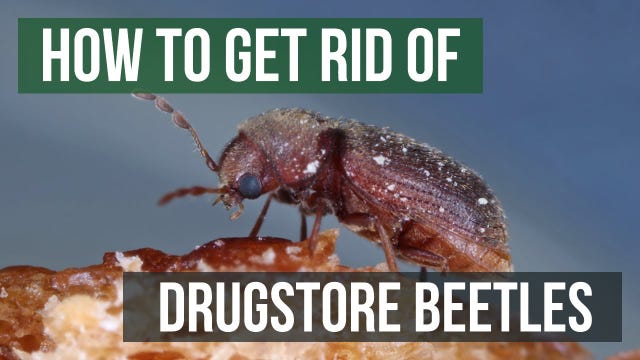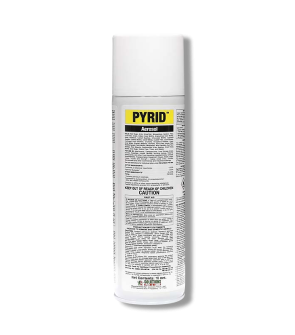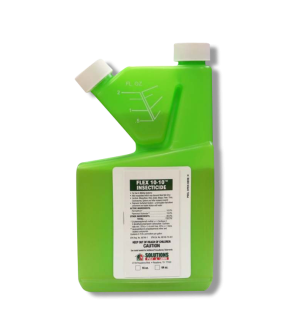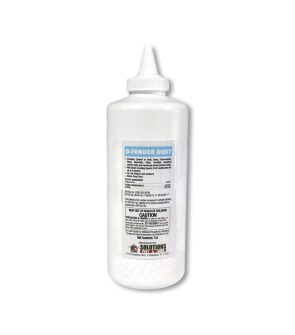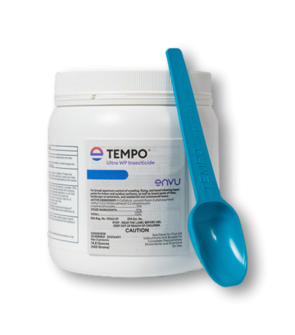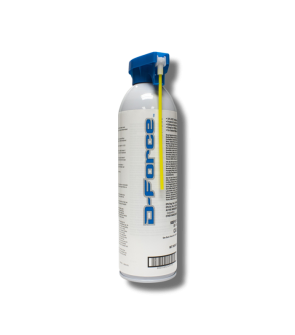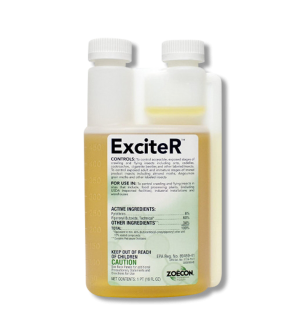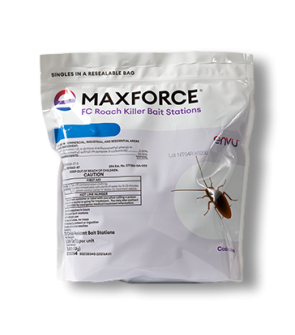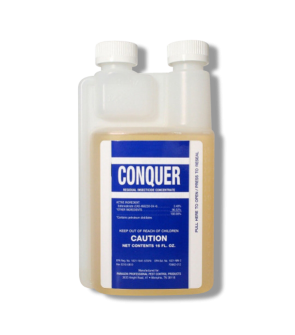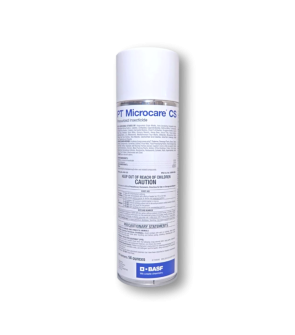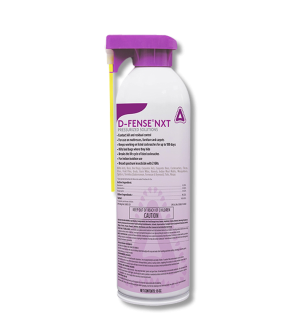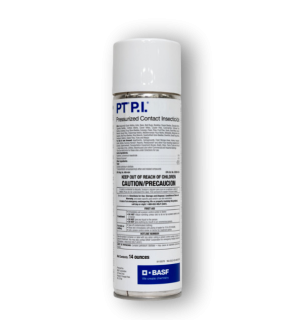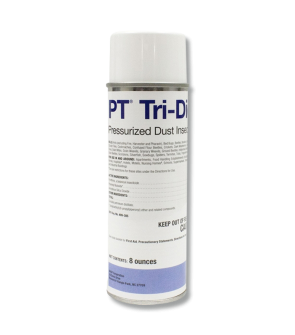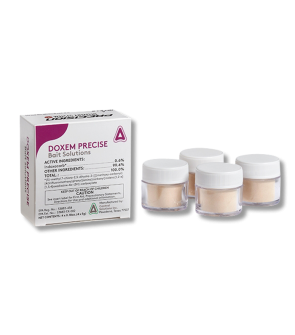Gain access to personalized product screening, the best pricing, rewards, and more!
Most Effective Products
Drugstore Beetle Control: How To Get Rid of Drugstore Beetles
This page is a general drugstore beetle control guide. Using the products and methods suggested, you will get control of drugstore beetles. Follow this guide and use the recommended products, and we guarantee 100% control of drugstore beetles.
They may be called drugstore beetles, but that doesn’t mean they are limited to your local pharmacy. Drugstore beetles can become a problem anywhere food goods are stored. The drugstore beetle has a very wide appetite and isn’t too picky about what it will munch on.
Drugstore beetles are also called biscuit beetles or bread beetles. The "Drugstore" in its name came from its longstanding history of invading pharmacies and contaminating various drugs and herbs that were stored away. However, the most common places they invade now are households.
Drugstore beetles enjoy a wide range of dried, stored foods but can also eat non-food items such as paper from books, wool, fur, leather, and museum specimens. They are deceptively strong, drilling through the wood to get to the food they are craving. Their habits result in hundreds of dollars in food damage if not treated.
If drugstore beetles have invaded your pantry, our DIY guide can help you easily eliminate the infestation.
Identification

Before applying pesticides, you need to identify the pest and ensure you are dealing with Drugstore Beetles. Misidentification can lead to using the wrong products, costing you time and money. Here are some identifying traits to look for:
- Drugstore beetles closely resemble the cigarette Beetle, another pantry pest. The main difference between the two bugs is that the antennae of the Drugstore Beetle have a distinct three-segmented club structure compared to the serrated antennae of the cigarette beetle.
- Drugstore beetles have small hairs on their bodies, typically ranging from 2 to 3.5 millimeters in length, and are brownish-red in color and round, cylindrical in shape.
- When adult drugstore beetles lay eggs, their larvae look like small white grubs. Drugstore beetle larvae are extremely small, and it is unlikely that you will see them without the aid of some magnifying equipment.

Use the images and descriptions above to help you correctly identify drugstore beetles. If you are not totally sure, contact us, and one of our pros will assist you with identification.
Inspection

After correctly identifying the drugstore beetles, inspect where these pests are hiding and what items they are infesting.
Where To Inspect
Begin the inspection process by searching the areas where you store food products. Most drugstore beetle adults will emerge from cocoons near where larvae have eaten. If you have discovered adult drugstore beetles in the pantry, you most likely have some cereal, spice, flour, cookie, grain, bean, or some other item they are actively eating.
If you have pets, check your pantries, shelves, cabinets, garages, and areas where pet food is stored.
What To Look For
Inspect open food packages for adult and larvae drugstore beetles. Because larvae are so tiny, you will have better luck spotting an adult drugstore beetle. Even if you cannot spot adult drugstore beetles, there is a chance they have already laid their eggs in your products.
Treatment
Once you have confirmed drugstore beetle activity, it is time to begin treatment. Wear personal protective equipment (PPE) before handling or applying products.
The products you will be using are Pyrid and Flex 10-10 Insecticide. Pyrid will be applied as a crack-and-crevice treatment, while you will use Flex 10-10 for residual spot treatment.
Step 1: Clean out Your Pantry
Before applying treatment, you need to prepare your pantry and food storage spaces. For this, you will need a vacuum and cleaning supplies. We recommend initially clearing out everything you have stored in your cabinets and tossing it so you leave nothing to chance. This also saves you time; otherwise, you would have to go through every item in your pantry to check for an infestation.
After removing all products, vacuum your area, paying special attention to the corners. Thoroughly wipe and clean any shelving. Check for cracks and crevices. Once your food storage area is clean and empty, you can begin treatment.
Step 2: Use Pyrid to Treat Cracks and Crevices
Pyrid Aerosol is a ready-to-use insecticide aerosol used as a flushing agent and is excellent for crack and crevice treatment inside pantries. Cracks and crevices need to be treated first because drugstore beetles can crawl into small spaces and lay eggs without you knowing.
Pyrid comes with a crack-and-crevice applicator, effectively targeting the product to your cracks and crevices. Remove the white applicator from the top of the can and replace it with the red straw-tip applicator.
Shake the can and then spray along the length of the cracks and crevices of your pantry shelving in quick bursts, usually at about 1 second of spray per foot. Pyrid will flush pests out of these areas. It will not leave behind a residual but will provide an immediate knockdown after flushing any pest out.
Step 3: Apply Flex 10-10
After applying Pyrid to your cracks and crevices, apply Flex 10-10. Flex 10-10 is a pyrethroid insecticide with a residual effect of up to 30 days and kills drugstore beetles long after application.
Use Flex 10-10 as a general surface spray to spot-treat the pantry shelves. You would first need to dilute the product in a pump sprayer.
Measure the square footage of your pantry. To find the square footage, measure the treatment areas' length and width in feet, then multiply them together (length X width = square footage).
Based on your findings, mix the Flex 10-10 at a rate of 3.2 fl. oz. per gallon to treat 750 sq. ft. of surface. Fill the sprayer with a half-gallon of water, add the appropriate amount of Flex 10-10, then fill the rest with water and shake the sprayer.
Apply the Flex 10-10 as a low-pressure fan spray along the back and side edges of the pantry shelving where the shelf meets the wall. Keep all people and pets away from the treated area until dry. Once the product has dried completely, you can restock your pantry.
Prevention
After treating your pantry for drugstore beetles, you will want to ensure they don't make a return. Here are some preventative measures to ensure you don't get a re-infestation:
- Start by checking every food packaging you purchase at the grocery store. Make sure the packaging is secure and free of rips or tears. If the packaging is tampered with, it may already be infested. Most infestations occur because food products are purchased and stored for many months.
- If you notice cracks or crevices in your foundation, consider sealing them up with caulk to prevent drugstore beetles from entering your area.
- Use plastic containers for every food item you buy. Replacing the original packaging with plastic containers will prevent drugstore beetles from accessing your food.
Key Takeaways
What are Drugstore Beetles?
- Drugstore beetles are small, brownish-red insects that invade areas with opened food packaging. They primarily infest pantries and garages.
- Drugstore beetles are a common problem worldwide. While their name suggests that they are typically a problem in drugstores and pharmacies, they mostly infest and invade residential homes.
How To Get Rid of Drugstore Beetles
- Locate the source of the infestation and toss out the food item. To be safe, discard all your stored pantry items and vacuum the shelves once they are cleared.
- Apply Pyrid and Flex 10-10 as a residual spot treatment around cracks and crevices along shelving.
Preventing Drugstore Beetle Reinfestation
- Check all the food items you buy from the grocery store before putting them away in your pantry. If there are rips and tears, the food may be infested and should be thrown away.
- Use plastic containers to keep your dried food goods rather than stock them in the pantry in the original containers.
- Seal cracks and crevices with caulk to reduce points of entry for Drugstore Beetles.
-
Q:I was told i have drug store beatle. Iv pulled every thing out of the pantry. No bugs on the shelf's. Only dead or almost dead on the one counter and window ledge. None on the other counter. I cant find where they are comeing from. My exterminator is not able to find it. Any other suggestions ?10/24/24






